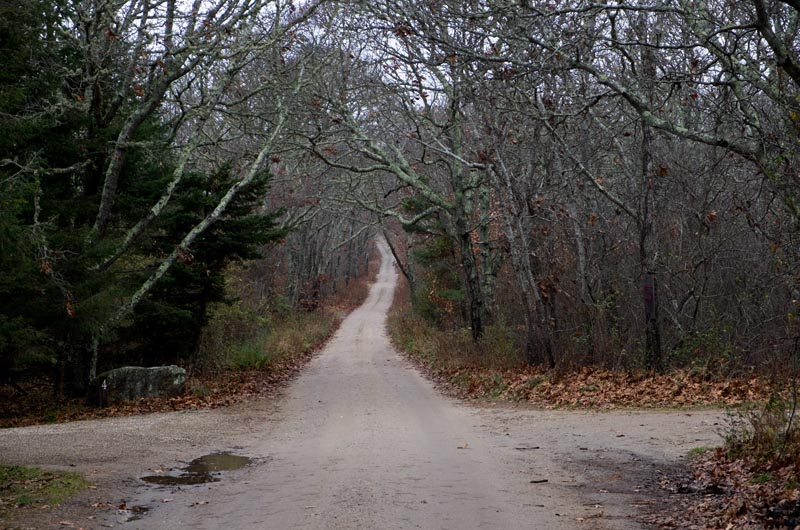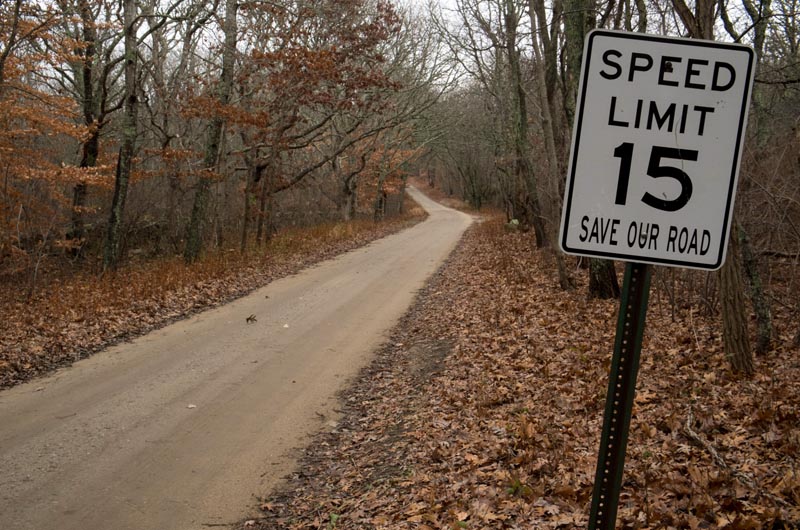Drawing from at least 10 years of research and planning, an Island rural roads committee is preparing for a new phase in its mission to protect and in some cases restore the rural character of Island roads.
Late last week the committee met with top planners from McCormick Taylor, a Philadelphia consulting and engineering firm, and Lardner/Klein Landscape Architects of Alexandria, Va. which have been hired as consultants in the process. The firms, which have worked on key rural road projects in other parts of the country, will help develop a manual to guide Island road projects over the next 10 or 20 years.
Craig Whitaker, an Island architect and a member of the roads committee, a subcommittee of the Martha’s Vineyard Commission, said this week that the manual would act like a contract between towns and the Department of Transportation, regulating roadway development on the Island.
Each town would need to vote on whether to adopt all, part or none of the manual. “Given the political culture, it has to be a voluntary effort,” Mr. Whitaker said.
For towns that choose to adopt the manual, it could help them qualify for federal programs and state funding, he said. Joseph Bucovetsky, principal planner for McCormick Taylor, said last week that having regional guidelines could also benefit those projects that require approval from multiple towns.
Committee co-chairman Linda Sibley pointed out that most people’s first experience of the Vineyard is from a bus. “It’s just core to our economy,” she said of road travel. The commission’s enabling legislation from the 1970s emphasizes the Vineyard’s unique character, and that “there is not just our interest but statewide interest in preserving us,” Ms. Sibley said.
Jim Klein, principal of Lardner/Klein, said the Vineyard’s scenic and historic qualities could make “a case for national significance.”
The consultants outlined a wide range of considerations, including bike lanes, signs, visibility, surface materials, viewsheds and the transitions between rural and more developed areas. In many cases they highlighted simple solutions, such as lowering road shoulders to improve visibility and adding curbs and other features to change the feel of a road and discourage speeding.
Mr. Klein said a central part of the process going forward would be determining whether to preserve, enhance or simply maintain each road. He said most of the roads he and Mr. Bucovetsky had seen on a tour of the Island on last Thursday would fall into the category of maintenance.
MVC executive director Mark London said Monday that he was eager to survey visitors and hospitality businesses to help determine which of the roads were most significant and why. “There is a lot of work that we could be doing,” he said.
The commission issued reports on Island roads in 2004 and 2010, and in 2005 completed an Islandwide visual preference survey and oversaw the mapping of viewsheds along most of the Island rural roads. The roads committee has gathered feedback from Island planning boards this year and developed a mission statement.
Preliminary work on the roads manual began last year with funding from the MVC. Mr. Whitaker said developing the manual might cost around $150,000, and could be funded by the state’s transportation improvement program (TIP). The Vineyard receives about $500,000 each year in TIP funding.
Mr. Klein told the committee Thursday that the goal was to move things from planning to implementation. “I think that’s what you need: a missing link or a jump from all this great work on identifying what’s important about the Island and roads to how do you address these comprehensive set of issues,” he said. “They are not unsolvable, you just need the framework.”
Island towns already are working to protect the scenic value of their roadways. Priority projects include the Edgartown-Vineyard Haven Road in Edgartown, Beach Road in Oak Bluffs and the Tashmoo Overlook in Vineyard Haven. Mr. Whitaker said towns were moving forward with those projects “as fast as possible.” He also noted the visioning process underway in Vineyard Haven.
“A lot of parallel stuff is going on that is constructive in my opinion,” he said.
He said the results of the new guidelines would arise slowly over many years, as individual projects come online. Quoting the Chinese philosopher Lao-Tzu, he said: “A journey of a thousand miles begins with one step.”








Comments
Comment policy »